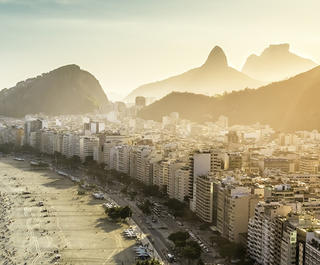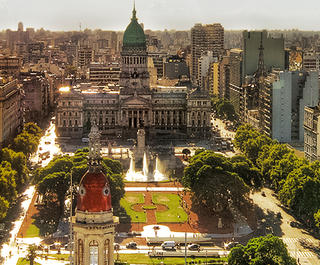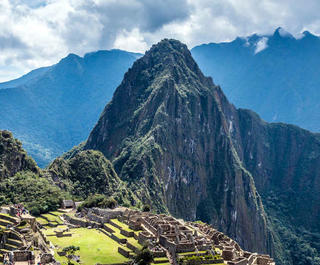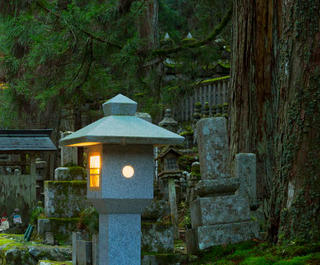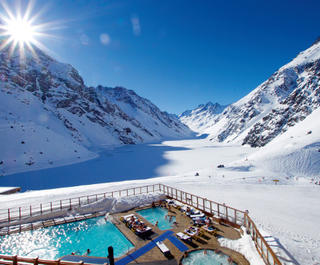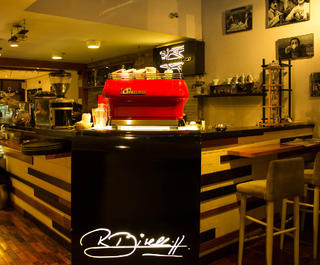
You’ve probably heard of quinoa and ceviche. Perhaps you’re familiar with lacuma and maca. You might even know that Peru is home to multicoloured corn and more than 3,000 varieties of potatoes. But have you heard of kiwicha, huacatay or macambo?
Go on, get your phone out.
The ingredients found in Peru are incredibly diverse and nutritious and, recently, Peruvian cuisine has exploded on to the world stage. Its capital, Lima, is at the heart of the action.
The produce is a big part of the package but chefs, too, are playing their part, directing the spotlight on to Peru’s unique foods using resourcefulness and originality. In the past few years, numerous restaurants have achieved world recognition, ranking highly in prestigious competitions. And more eateries are opening all over town, catering to people who don’t just want to eat – they want to taste, they want to explore, they want to understand where the produce comes from.
Of course, come to Peru to trek to Machu Picchu, to explore the Amazon, to gaze upon Lake Titicaca, but be sure to spend at least a few days just eating – because where else in the world can you try Peking cuy (guinea pig) and cactus bread?
Regional Cuisine
Peru comprises three distinct geographic regions and consequently offers a diverse variety of produce. The Amazon rainforest is the largest region, representing almost 60 per cent of Peru; the highlands make up 30 per cent; the almost 3,000-kilometre stretch of coast is the third. Lima, situated on the coast, is one of the best places to sample fresh seafood and try Amazonian and Andean specialties thanks to chefs who work with farmers and growers from those regions.
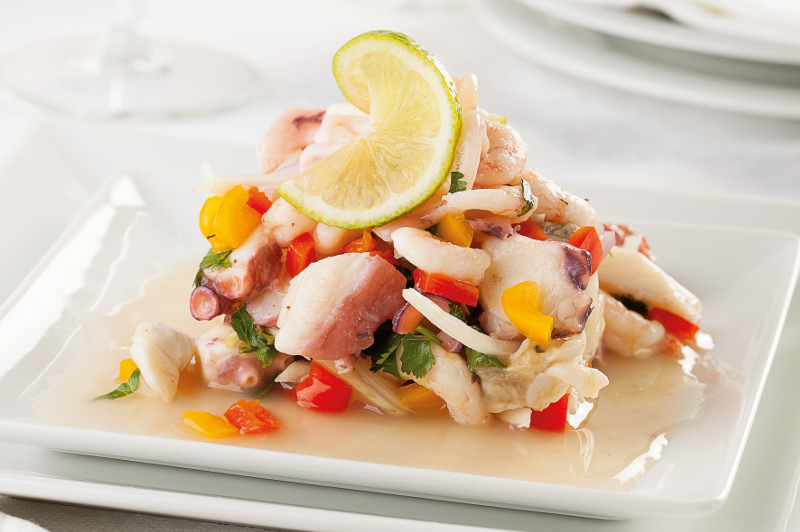 Ceviche, the closest thing to Peru's national dish. Image: Getty
Ceviche, the closest thing to Peru's national dish. Image: GettyAmazonian cuisine
Renowned chef Pedro Miguel Schiaffino opened Peruvian-Amazonian restaurant Malabar in Lima in 2004, introducing locals to Amazonian dishes like fish tiraditos, jungle merengon and cecina de paiche. Acknowledging a strong interest, he opened Amaz in 2012. “Amaz is the first professional restaurant in Peru that conceptualises Amazonian cuisine,” Schiaffino says. “The menu is 100 per cent Amazonian.”
Seafood
If Peru had a national dish, it would be ceviche (raw fish cubes marinated in citrus juice and mixed with herbs). Head to Avenida La Mar, known as ‘the street of ceviche’ at noon – traditionally ceviche is eaten at lunchtime – and sample as many varieties as you can. Be sure to also stop in at Rafael Osterling’s El Mercado; although it’s a cevicheria, you can try other seafood dishes here, too, like octopus and grilled fish sandwiches.
Andean cuisine
Cuy (guinea pig) was once an important meat source for people of the Andes; inside Cusco Cathedral, there’s a replica of Leonardo da Vinci’s The Last Supper by Marcos Zapata, where Christ and his 12 disciples are pictured seated around a platter of cuy, demonstrating just how important this staple was to the Andean diet. These days, you can try cuy at Huaca Pucllana, a popular restaurant overlooking the same-named clay pyramid ruins in the Miraflores district.
Fusion Food
Peruvian gastronomy is a tantalising mish-mash of cuisines, thanks to influences from different nations populating Peru throughout history. Spain’s rule from 1533 to 1821 left the biggest mark, but Africans, Chinese, Japanese, French and Italians all played a role, too. In Lima in particular, fusion restaurants are easy to find.
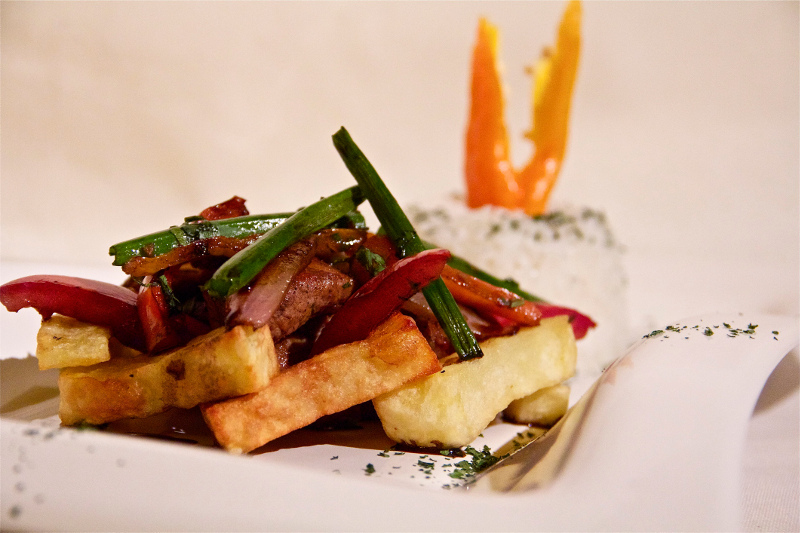 Lomo saltado is a well-known chifa dish. Image: Getty
Lomo saltado is a well-known chifa dish. Image: GettyNikkei
Nikkei is a fusion of Peruvian and Japanese cuisines, and Mitsuharu Tsumura’s restaurant Maido comes highly recommended. Peruvian-born and of Japanese descent, Tsumura works with only the best local fisherman and sources premium products from Japan to craft refined dishes that consistently surprise and excite diners.
Chifa
A tasty blend of Chinese and Peruvian cooking styles, chifa is one of the most popular and talked-about fusion styles in Peru. Lomo saltado (a hybrid stir-fry of beef strips, tomatoes, jalapenos and onions cooked in soy sauce and served alongside hot chips) is the best-known chifa dish, and you’ll be able to find it at almost any chifa eatery. If you want something a little upmarket, Madam Tusan, opened in 2011 by Gaston Acurio, is a great restaurant to try out.
Criollo
Until recently, criollo cuisine (essentially Peruvian comfort food) was reserved for home, but lately criollo eateries have been getting plenty of airplay. El Rincon Que No Conoces (which roughly translates to ‘the corner joint you’ve never heard of’) is the place to go to try old-time favourites like causa (yellow mashed potato, typically layered with avocado or tuna) and caucau (a potato and tripe stew traditionally served with rice).
Famed Fine Diners
Thanks to Peruvian chefs such as Gaston Acurio, Virgilio Martinez Veliz, Pedro Miguel Schiaffino and Tsumura, the world’s eyes – and mouths – have been opened to a country’s cuisine as rich in flavour as its history. Travellers are flocking to Peru specifically to eat – and in restaurants that rank as some of the finest in the world.
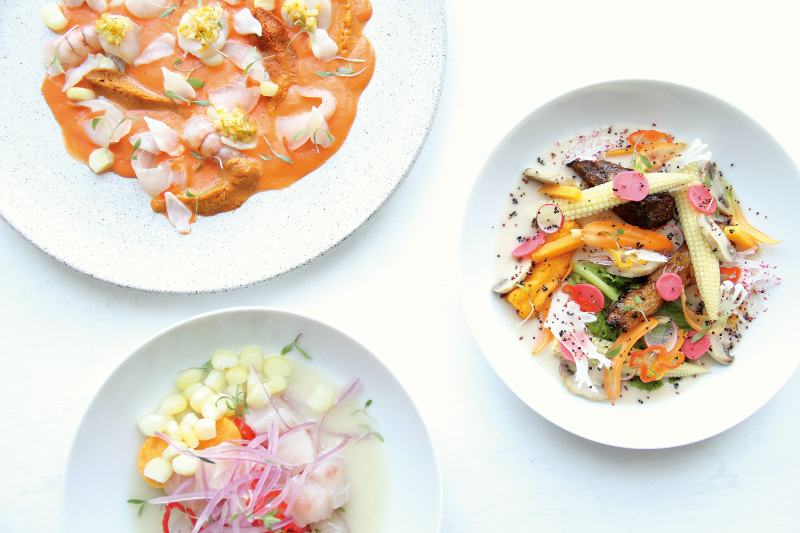 Nikkei cuisine at Mitsuharu Tsumura's Maido. Image: Maido
Nikkei cuisine at Mitsuharu Tsumura's Maido. Image: MaidoAstrid y Gaston
Gaston Acurio changed the face of Lima’s dining scene when he opened Astrid y Gaston with his wife Astrid Gutsche in 1994. In 2011, Astrid y Gaston was the first restaurant in Peru to ever make San Pellegrino’s World’s 50 Best Restaurants list, and from there his fame skyrocketed. Today the national celebrity runs an empire of 30-plus eateries, has a TV show (Aventura Culinaria), oversees food festivals (the most famous of which – Mistura – he launched) and is showing no signs of slowing down. Although now there are plenty of other fine restaurants in Lima, Astrid y Gaston is still the one that helped ignite the city’s transformation into the foodie destination it is today.
Central
Thanks to his thoughtful approach, Virgilio Martinez’s restaurant Central (which he opened in 2009 and runs with his wife, fellow chef Pia Leon) is ranked fourth in San Pellegrino’s World’s 50 Best Restaurants. Martinez approaches food without fixating on trends, instead using the soil, sea and everyday moments as inspiration for his art.
“Our complex geography, diverse culture and abundance of products, flavours, colours and textures is an asset,” he says. “It’s through this that we can connect to our diners and make them feel a part of a journey throughout this territory.”
Maido
Need another reason to try nikkei cuisine? Tsumura’s Maido won the Highest Climber award in San Pellegrino’s World’s 50 Best Restaurants in 2016. Although nikkei food is not sold on every street corner just yet, there’s a growing awareness of it thanks to Tsumura.
“Entering the awards at number 44 in 2015 was basically us introducing nikkei cuisine to the world, and jumping to number 13 in 2016 validates that people like it,” he says proudly.
Food for Thought
In Peru, responsible gastronomy is all the rage right now. Restaurateurs are working directly with honourable farmers and producers; schools are implementing educational sustainable-living programs; communal vegetable and herb gardens are in vogue; diners are choosing to eat at restaurants where wholesome food is served. Healthy is officially in.
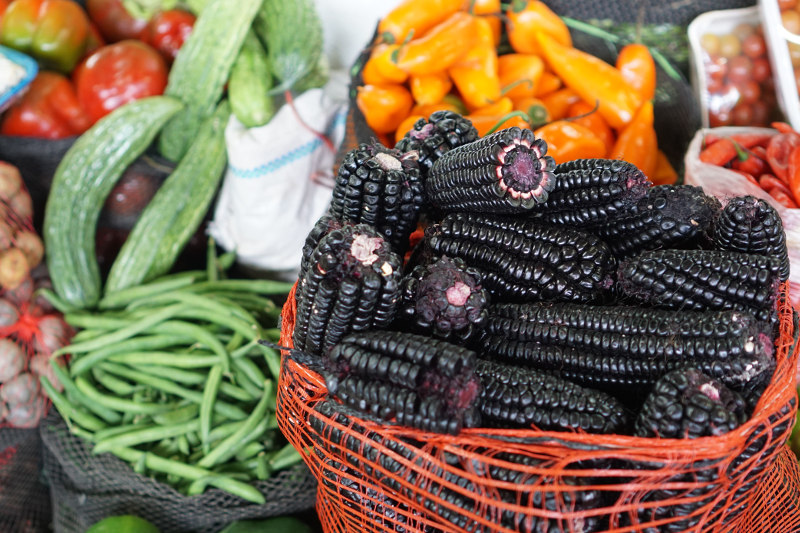 Organic produce is making a comeback in Lima. Image: Getty
Organic produce is making a comeback in Lima. Image: GettyMindfulness
Brisa Deneumostier is a Peruvian chef and mindfulness teacher who focuses on teaching people about the power of nourishing food through activities such as mindful walking, cooking, gardening and eating.
“My Brisa Culinaria tours emphasise awareness of our relationship with food, ourselves, others and the environment we live in,” Deneumostier explains.
Organic food
Growing organic produce was the norm once upon a time, and today Peruvians are once again embracing its power. Local (a lunch-service restaurant that also offers brunch on Sundays) is a great place for an introduction. The menu changes daily but usually there will be vegetarian, vegan and animal protein choices on offer; the constant is that the nourishing food is always healthy and organic.
Minimal-waste cooking
Something that is catching attention in Peru right now is minimal-waste cooking, with young and ambitious chef Palmiro Ocampo a strong advocate for the cause. Ocampo heads up 1087 Bistro, where he astounds diners with imaginative takes on Peruvian dishes using interesting ingredients like cushuro (a freshwater algae known as ‘Andean caviar’). His most interesting ingredient, however, is wastage – to him it’s just another component to work into his creations.
This article first appeared in Travel ideas – WOW List 2017.
* Featured image: The district of Miraflores in Lima, Peru. Image: Getty
Visit your local Flight Centre store or call 131 600 for more advice and the latest deals on travelling to Peru.



